Unagi Cuisine: 5 Must-Try Japanese Eel Dishes and Best Restaurants

Unagi (Japanese eel) is loved in Japan as a healthy food. We introduce five types of unagi dishes to try in Japan along with recommended restaurants. We also explain the differences between Japanese eel and conger eel.
Unagi Cuisine in Japan
Unagi, the Japanese eel, belongs to the Anguillidae family (ray-finned fish) and is found widely across East Asia.
In Japan, unagi is deeply embedded in the country's cultural cuisine, commonly enjoyed in kabayaki (broiled and basted eel) dishes. Unagi is loved for its highly nutritional content that helps the human body recover from fatigue, boosting the appetite.
Read on to learn 5 popular Japanese eel dishes and restaurants where you can try them, along with basic information on unagi.
Unagi Cuisine Guide
1. Japanese Eel (Unagi) vs Conger Eel (Anago)
2. Does Unagi Blood Contain Poison?
3. Must-Tru Unagi Dishes in Japan
- Unaju: Japanese Grilled Eel on Rice
- Shirayaki: Grilled Unagi
- Hitsumabushi
- Seiro Mushi: Steamed Unagi
- Umaki: Unagi Rolls
9. Midsummer Day of the Ox: Celebrate by Eating Unagi
Read also
Japanese Eel (Unagi) vs Conger Eel (Anago): Features and Differences
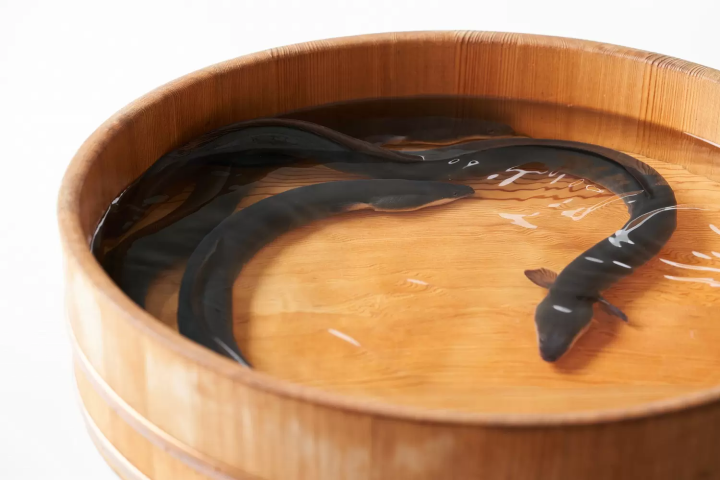
Unagi (Japanese eel). Photo by Pixta
Adult eels typically reach about one meter in length and are characterized by their elongated shape.
Although unagi and anago look similar, they are different types of fish. Both have elongated bodies and are dark in color, but a closer inspection reveals several differences.
Unagi has a gray-colored back that is closer to black with a yellowish-white belly.
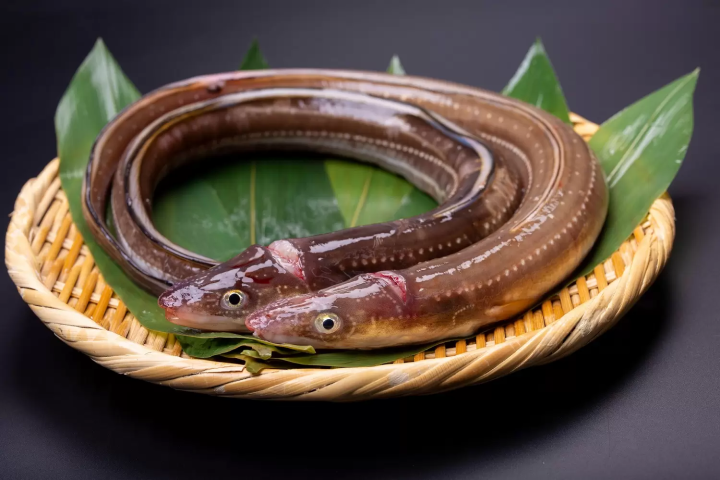
Anago (conger eel). Photo by Pixta
In contrast, anago has a light brown body with speckled white patterns. Also, the tail fin of the unagi is rounded, while that of the anago is pointed.
Unagi is a freshwater fish belonging to the Anguillidae family. It spawns and hatches only in the ocean but subsequently lives in rivers, lakes, and ponds. In contrast, anago is a saltwater fish belonging to the Congridae family and spends its entire life in the sea.
Both are widely available for consumption and can often be found in supermarkets.
Unagi is rich in fat and characterized by a rich flavor. It becomes incredibly juicy and fragrant when prepared as kabayaki (broiled and basted eel in a savory-sweet sauce).
Unagi is also high in nutrients, including vitamins A and E, with vitamin A content about five times higher than anago's. Due to its rich nutritional profile, unagi tends to be higher in calories than anago.
Anago, on the other hand, has a lower fat content and a mild, light flavor. It can be deliciously showcased in various cooking methods, such as tempura and simmered dishes.
The city of Hamamatsu in Shizuoka Prefecture is particularly famous for unagi dishes, which are a local specialty.
Does Unagi Blood Contain Poison?
Unagi blood contains a toxic component known as ichthyohaemotoxin. This toxin is a type of protein that can cause symptoms of poisoning, such as diarrhea, vomiting, rash, and respiratory distress if ingested.
However, the toxin can be completely neutralized by heating at 60°C for 5 minutes.
Unagi dishes commonly served in Japan, such as kabayaki and shirayaki (grilled, flavored simply with salt), are cooked to sufficient temperatures, making them safe and delicious to eat.
Must-Try Unagi Dishes in Japan
Japanese eel dishes are rich in nutrients and very delicious. Below we introduce the most popular types.
1. Unaju: Japanese Grilled Eel on Rice

Photo by Pixta
Unaju, or Unadon, is the most common way to prepare unagi in Japan. It consists of grilled unagi kabayaki served over rice and topped with a special sauce.
Since Japanese eel is often pricey, it is a popular cuisine when gathering for special occasions.
The difference between unaju and unadon lies in the serving style.
Unaju is presented in a layered box (jubako), while unadon is served in a bowl. However, the basic ingredients remain the same.
Kabayaki refers to a cooking method in which the unagi is opened, the bones removed, and grilled with a sweet and savory sauce.
Using charcoal during grilling adds a fragrant crust while keeping the inside tender and fluffy.
The sauce is often made by simmering ingredients such as soy sauce, mirin, and sugar, enhancing the umami of the unagi with its sweet and savory flavor.
Unagi kabayaki has been enjoyed since the Edo period (1603-1868). Additionally, many people have a tradition of eating unagi, especially on Doyo no Ushi no Hi (Midsummer Day of the Ox).
Try Unaju at Sumiyaki Unagi Hajime in Hamamatsu
Sumiyaki Unagi Hajime in Hamamatsu is a highly popular restaurant known for its unaju. It is conveniently located near attractions like Lake Hamana and the Nakatajima Sand Dunes.
At Sumiyaki Unagi Hajime, the unagi is grilled slowly over charcoal, resulting in a fragrant exterior and a tender, fluffy texture.
The exquisite grilling method maximizes the umami of the unagi and perfectly complements the unique sweet and savory sauce.
They offer a variety of unaju menus, such as the one made with a whole eel served with liver soup and pickles.
Additionally, generous options are available, like the Tokujo (1.5 eels) and Jo-tokujyo (2 eels).
The unagi served here has been selected carefully and is of high quality. Moreover, the sauce, which has been perfected since the restaurant's founding, features a deep and rich flavor.
Sumiyaki Unagi Hajime
Address: 9690 Ubumi, Yūdō-cho, Nishi-ku, Hamamatsu City, Shizuoka Prefecture
Business Hours: 11:00 AM - 2:30 PM (Last Order 1:45 PM), 5:00 PM - 8:30 PM (Last Order 7:45 PM) *Note: The restaurant will close once the unagi is sold out.
Closed: Irregular holidays
Official Website: https://unagi-hajime.com/ (Japanese)
↑ Return to the top of article.
2. Shirayaki: Grilled Eel
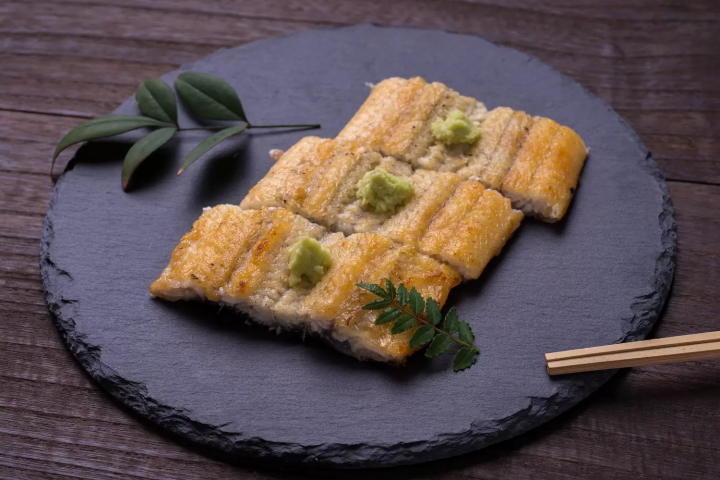
Photo by Pixta
Shirayaki is an unagi dish that is grilled without using sauces or seasonings.
By simply grilling the eel, it develops a crispy exterior and a light, fluffy interior, allowing you to fully enjoy the rich flavor of the eel’s fat.
Additionally, as excess fat drips away, this dish is also popular among those seeking a healthier option.
Shirayaki is best enjoyed with condiments like wasabi, soy sauce, salt, or yuzu pepper, which allows you to savor the eel's natural taste.
Try Shirayaki at Unagi no Iguchi in Hamamatsu
Unagi no Iguchi, located in Hamamatsu, specializes in take-out and shipping of eels. It is one of the few specialty shops in Hamamatsu, a well-known unagi-producing area, and is especially popular for its shirayaki.
At Unagi no Iguchi, they use alpine spring water sourced from 100 meters underground. By utilizing this spring water, they can effectively remove any fishy odors from the unagi.
The unagi served at Unagi no Iguchi is carefully grilled by skilled chefs. They employ a unique grilling method, ensuring the eel is cooked thoroughly to the core and has a fluffy texture.
Adjusting the grilling technique to suit each eel's subtle differences in fat content and thickness requires keen judgment and advanced skills.
Unagi no Iguchi
Address: 253-12 Hiraguchi, Hamana-ku, Hamamatsu City, Shizuoka Prefecture
Business Hours: 9:30 AM - 6:30 PM
Closed: Tuesdays
Official Website: https://www.una-iguchi.jp/ (Japanese)
↑ Return to the top of article.
3. Hitsumabushi
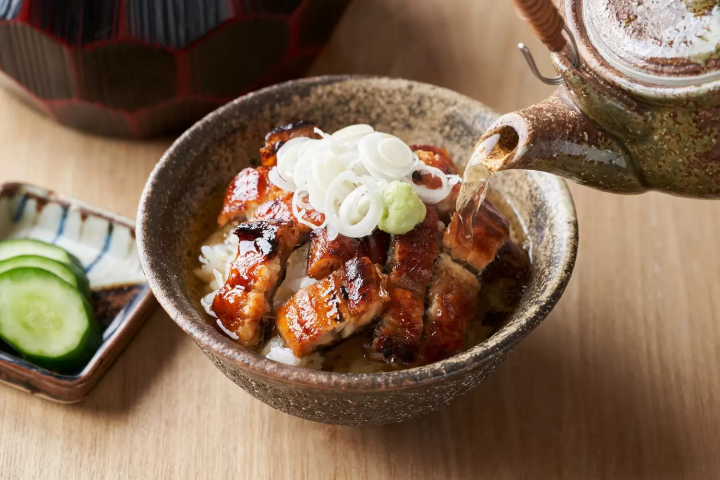
Photo by Pixta
Hitsumabushi is a local dish from Nagoya that features grilled unagi finely chopped and served over rice. Its distinctive feature lets you enjoy three different flavors from a single dish.
1) Enjoy the dish as is: First, savor the unagi’s flavor without adding anything. This will allow you to fully appreciate the eel's fragrance and the sauce's taste.
2) Add garnishes: Next, add condiments such as green onions, wasabi, nori (seaweed), and mitsuba (Japanese wild parsley). These garnishes give the dish a refreshing flavor.
3) Pour dashi broth: Finally, pour dashi broth over the dish and enjoy it like ochazuke (tea over rice). The broth seeps into the unagi and rice, creating a mellow taste.
Try hitsumabushi at Atsuta Horaiken in Nagoya
Atsuta Horaiken, located in Nagoya, is a long-established unagi restaurant known as the birthplace of hitsumabushi. Founded in 1873, it boasts a history of over 150 years.
A distinct feature of their hitsumabushi is enjoying the dish by pouring special dashi broth over it. This dashi enhances the flavors of the eel and rice, creating a rich and satisfying taste.
Atsuta Horaiken Main Store
Address: 503 Kobe-cho, Atsuta, Nagoya City, Aichi Prefecture
Business Hours: 11:30 AM - 2:00 PM, 4:30 PM - 8:30 PM
Closed: Every Wednesday and the 2nd and 4th Thursday (open on holidays with substitute days off)
Official Website: https://www.houraiken.com/english/index.php
Read also
↑ Return to the top of article.
4. Seiro Mushi: Steamed Unagi
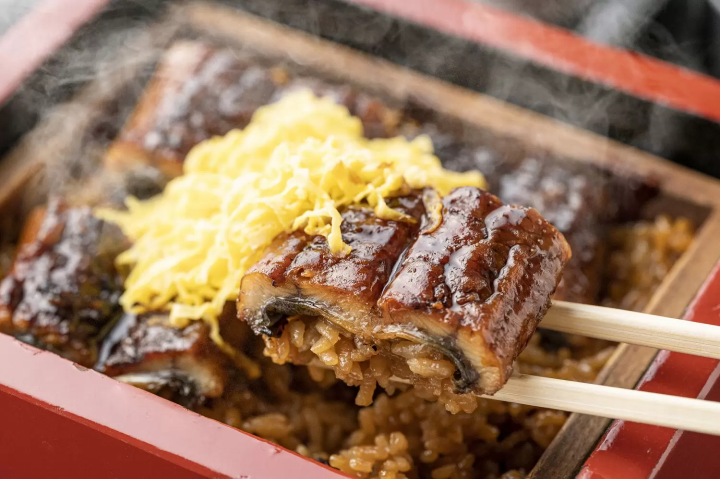
Photo by Pixta
Seiro mushi is a specialty dish from Yanagawa City in Fukuoka, where grilled unagi kabayaki is steamed with rice in a bamboo steamer.
The grilled unagi is placed on top of rice flavored with the same sauce and garnished with kinshi tamago (thinly sliced egg).
The unique feature of this dish is that the umami of the unagi seeps into the rice, allowing you to enjoy a fluffy texture and rich aroma.
The steaming process makes the unagi tender while the rice absorbs the fragrant flavor of the sauce.
This cooking method has been a tradition in Yanagawa since the Edo period and offers a distinctive taste different from unaju or unadon.
Try Seiro Mushi at Motoyoshiya in Yanagawa
Motoyoshiya, located in Yanagawa, is a longstanding restaurant famous for its seiro mushi (food prepared in a bamboo steamer). Founded in 1681, it boasts a history of over 300 years.
The seiro mushi at Motoyoshiya is characterized by its fluffy texture and rich aroma, with the umami of the unagi seeping into the rice for an exquisite flavor.
The restaurant has multiple locations within Yanagawa City and is loved by tourists and locals.
Motoyoshiya
Address: 69 Asahimachi, Yanagawa City, Fukuoka Prefecture
Business Hours: 10:30 AM - 9:00 PM (Main Store)
Closed: Mondays
Official Website: https://www.motoyoshiya.jp/english.html
↑ Return to the top of article.
5. Umaki: Unagi Rolls
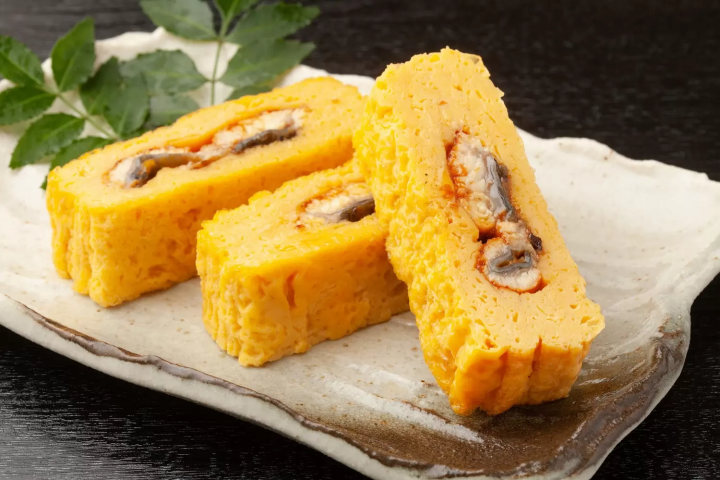
Photo by Pixta
Umaki is a dish that features grilled unagi kabayaki rolled in a broth-infused beaten egg. The fluffy texture of the egg combined with the fragrant unagi creates an exquisite dish.
To prepare umaki, the grilled unagi is cut into bite-sized pieces, and a mixture of beaten eggs with dashi and seasonings is prepared. Oil is heated in a tamagoyaki pan, and the beaten eggs are poured in.
Once partially cooked, the unagi is placed in the center and rolled up with the egg. This process is repeated to create layers, and once shaped, the dish is complete.
Umaki is easy to make at home, making it a great addition to everyday meals.
Try Umaki at Aoba in Kobe
One of the popular places for umaki is Aoba, located in Kobe. Situated near Sannomiya Station and Motomachi Station, it is loved by locals and tourists.
The umaki at Aoba combines fluffy eggs and fragrant unagi perfectly. Despite the simple preparation process, it presents beautifully, making it a delightful dish for special occasions.
In addition to umaki, Aoba offers a variety of unagi dishes, and its meticulous cooking methods and traditional flavors have garnered a loyal following from many customers.
Aoba Sannomiya Store
Address: 2-8-5 Kitacho, Chuo Ward, Kobe City, Hyogo Prefecture, Abe Building 1F
Business Hours: 11:00 AM - 2:30 PM, 5:00 PM - 9:00 PM (Last Order 8:30 PM)
Closed: Wednesdays
↑ Return to the top of article.
Doyo no Ushi no Hi (Midsummer Day of the Ox) and Japanese Eel Dishes

Photo by Pixta
"Doyo" refers to the approximately 18 days before the start of each season: spring, summer, autumn, and winter.
"Ushi no Hi" (Midsummer Day of the Cow) indicates the days that correspond to the sign of the cow in the Japanese zodiac. Together, these are called "Doyo no Ushi no Hi."
This period marks a seasonal transition, during which there is a tradition of eating nourishing foods to avoid health issues caused by temperature fluctuations.
Unagi is a food known for its effectiveness in recovering from fatigue and boosting appetite.
The custom of eating unagi on Doyo no Ushi no Hi began in the late Edo period. It is said that the inventor Hiraga Gennai put up a sign at his shop saying, "Today is Doyo no Ushi no Hi," to promote unsold unagi during summer.
Enjoy Unagi Dishes in Japan
You can enjoy dishes using domestically sourced unagi in regions known for unagi, such as Shizuoka and Aichi Prefectures. The menus at long-established unagi restaurants satisfy the palates of many customers.
There are various cooking methods for unagi, including unaju, shirayaki, hitsumabushi, and seiro mushi, so be sure to find a flavor you love!
Read also
Written by Cakutama editorial team
This is the official account of MATCHA's editorial department. Our articles feature useful travel information for visitors to Japan, from how-to guides to recommended places to visit.


























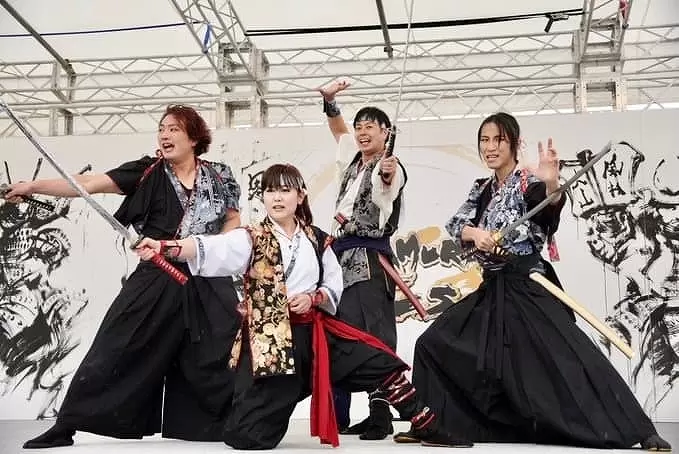









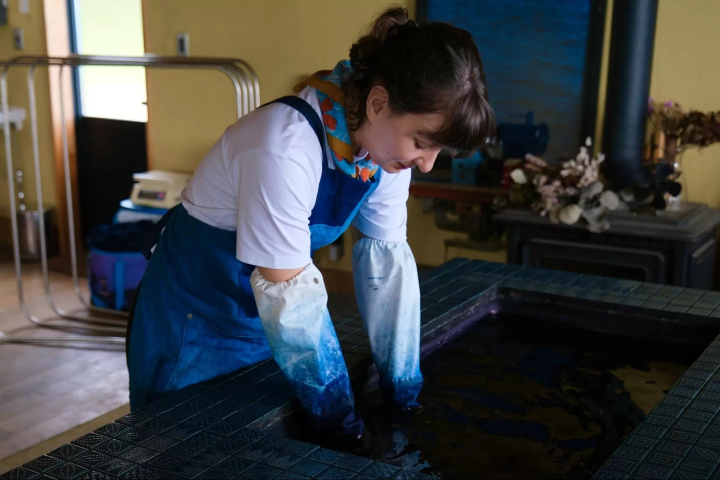


![[2026] Top 5 Strawberry Picking Spots in Tokushima, Naruto| Farms and Access Guide for January to May](https://resources.matcha-jp.com/resize/720x2000/2025/03/06-227165.webp)
